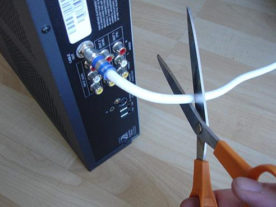
A new study breaks down America’s growing Asian population. (CDC)
A new study of Asian-Americans, the fastest-growing racial or ethnic group in the United States, reveals an extremely diverse community.
The Pew Research Center says the population of Asian-Americans grew to just over 20 million between 2000 and 2015 — an increase of 72 percent. In comparison, the number of Hispanics, who comprise the nation’s second-fastest growing group, increased by 60 percent during that 15-year period.
Some of the fastest-growing subgroups were Bhutanese, Nepalese and Burmese, with the slowest growth rates registered among Laotians and Japanese.
Asian-Americans have roots in more than 20 countries in East Asia, Southeast Asia and the Indian subcontinent, according to Pew, which says 94 percent of Asian-Americans are from 19 origin groups.
Pew said Asian-Americans will be the largest immigrant group in the U.S. by 2055 when they are expected to pass Hispanics. Asians will make up 38 percent of all immigrants in 50 years, while Hispanics will make up 31 percent, the study predicts.
People of Chinese origin make up the largest group, which, at 4.9 million, comprise nearly one-quarter of the Asian population. Indians and people of Philippine descent are the next largest, with populations of 4 million and 3.9 million, respectively, the study said. Pew found that Vietnamese, Koreans and Japanese each have over 1 million people. The remaining 13 origin groups account for 12 percent of Asians in the United States.
Pew says nearly 60 percent of the U.S. Asian population are foreign born, but that number varies by group, with only 27 percent of Japanese being foreign born, compared to 92 percent of Bhutanese.
In terms of illegal immigration, Pew found Asians made up 13 percent of the estimated 11.1 million illegal immigrants.
Overall, Asian-Americans fare well economically, compared with the rest of the U.S. population, but the Pew survey notes that prosperity “varies widely” among the subgroups. The median household income for Asians was $73,060 per year, almost $20,000 more than the U.S. average of $53,600. Indian households had the highest income at $100,000 per year, while Burmese had the lowest at $36,000.
Only 12.1 percent of Asians live in poverty compared to 15.1 percent of the overall U.S. population. Indians had the lowest poverty rate, at 7.5 percent, and Burmese had the highest level, at 35 percent.
Regarding education, the survey said 51 percent of Asians ages 25 and older have a bachelor’s degree or more. That compared to 30 percent for the entire country. Again, the percentages vary, depending on the subgroup, with 72 percent of Indians having a bachelor’s degree or more. Only 9 percent of Bhutanese had a college degree or higher.
About 70 percent of Asian-Americans over the age of 5 were proficient in English, but like other measures, the figure varies widely among subgroups. Eighty-four percent of Japanese-Americans were proficient, while only 27 percent of Bhutanese spoke the language well. Less than one-third of Asian-Americans spoke English at home, Pew said.
Forty-five percent of Asian-Americans live in the Western U.S. with about a third living in California. That figure compares to 23 percent in the South, 20 percent in the Northeast and 12 percent in the Midwest.
























